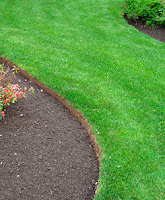Property managers and homeowners who choose sod make a smart investment in the appearance of their properties and homes. Bermuda grass or Zoysia sod provide vigorous, drought-resistant summertime green lawns that do well in the metro-Atlanta area without demanding extra care after establishment. Consult with Crabapple LandscapExperts to determine if an upgrade to a hybrid Bermuda or Zoysia sod is right for you.
Sod makes sense when planting a commercial property, creating an instant, picture-perfect lawn that takes less time to establish than seeding, sprigging or plugging. Crabapple LandscapExperts will consult on the type of turf that is best for your particular application, whether in sun or shade, heavy or light traffic or specialty cases.This time of year is ideal to establish a warm-season lawn. The soil is warmed from the spring, and the grass is in a vigorous growth phase, perfect for quick establishment.
Crabapple will also determine how much square footage of sod will be needed for any application and place your order with a reputable sod farm, ensuring fresh, vigorous sod.
● The area to be sodded will be prepped by breaking up and loosening the soil, then leveled and raked to remove extraneous stones, sticks, leaves and debris.
● Typically, Crabapple LandscapExperts will spread a complete fertilizer before the sod is laid and rake it into the soil where the roots will be placed.
● Dry soils are deeply watered a day or two before laying sod.
● Sod comes in strips that are laid in a running bond pattern as for bricklaying. Crabapple’s LandscapExperts will butt joints tightly but will not overlap edges. Afterward, the newly laid lawn is rolled lightly with a half-filled lawn roller for good adhesion.
● Immediate watering is essential, and during the first week or two the sod should not be allowed to dry out until the roots grab hold and begin to grow into the prepared soil.
Enjoy a beautiful turf that sets off the architecture and gardens like a picture frame.









